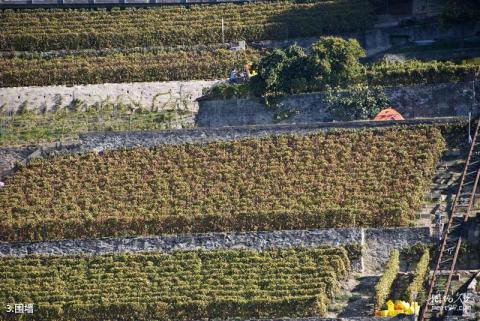
Introduction to the wall: In the 12th century AD, the monks of the Lavaux Temple used ancient cement mixed with sand to form an earthen wall, and opened up the earliest terraces. In 1331, the specifications of the terraces were recorded in documents. The length of the terraces was 10- The terrace walls are 15 meters wide and 5-6 meters high to maintain water and soil. In 1391, a document stipulated the terms of protection for winegrowers regarding the terrace walls and their drainage function. In 1803, Lausanne became the capital of the canton of Vaud and joined the Swiss Confederation. Taking advantage of this administrative advantage, Lausanne began large-scale "land annexation". Larger terrace walls appeared, and irrigation was adopted to cover the terraces in the entire basin. Measures are taken to prevent soil erosion.
These terraced walls absorb heat from the sun during the day and continue to release heat to the suddenly cold soil at night to maintain the necessary temperature of the soil. Locals often say they have three suns: the sun in the sky, the sun reflected in the lake and the sun hidden in the walls.
